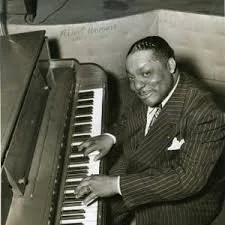Boogie woogie is characterized by its left-hand ostinato patterns, which are steady, repeating musical phrases that anchor the rhythm and harmony of a piece. These ostinatos often outline a walking bass line, a type of bass progression that moves steadily through the scale to create a sense of forward motion. Sometimes, the left hand plays broken chords, which are chords whose notes are played one at a time in a rhythmic sequence rather than struck all at once. These patterns provide a propulsive foundation over which the right hand plays rhythmically contrasting, highly ornamented melodic phrases. The music is often fast paced and typically follows a 12-bar blues structure, making it both familiar and exciting to audiences.
Like ragtime, boogie woogie emphasizes rhythmic complexity and is often performed on solo piano. However, where ragtime features a more syncopated, march-like feel with a fixed sectional structure such as AABBACCDD, boogie woogie is more groove oriented and improvisational, particularly in the right-hand melody. One of the earliest and most influential examples of the style is Pinetop Smith’s “Pinetop’s Boogie Woogie,” a 1928 recording that captures the energy and danceable qualities of the genre.
Boogie woogie quickly became a staple at “rent parties,” informal gatherings where tenants hired a pianist, sold food and drinks, and charged a small admission fee to help cover the cost of rent. These parties were especially common in Black neighborhoods in cities like Chicago and New York during the 1920s and 1930s. More than just a means of raising money, rent parties served as vital social events that brought together musicians, neighbors, and community members. They provided an opportunity for musical experimentation, friendly competition among pianists, and the circulation of new styles and ideas. The high-energy, danceable rhythms of boogie woogie made it the perfect soundtrack for these lively and communal events. These parties helped circulate the music among working class Black communities and provided fertile ground for stylistic innovation and improvisation. Boogie woogie’s percussive, driving piano rhythms later influenced the development of swing, jump blues, and early rock and roll, and its signature left-hand patterns remain a vital part of blues piano vocabulary today.

